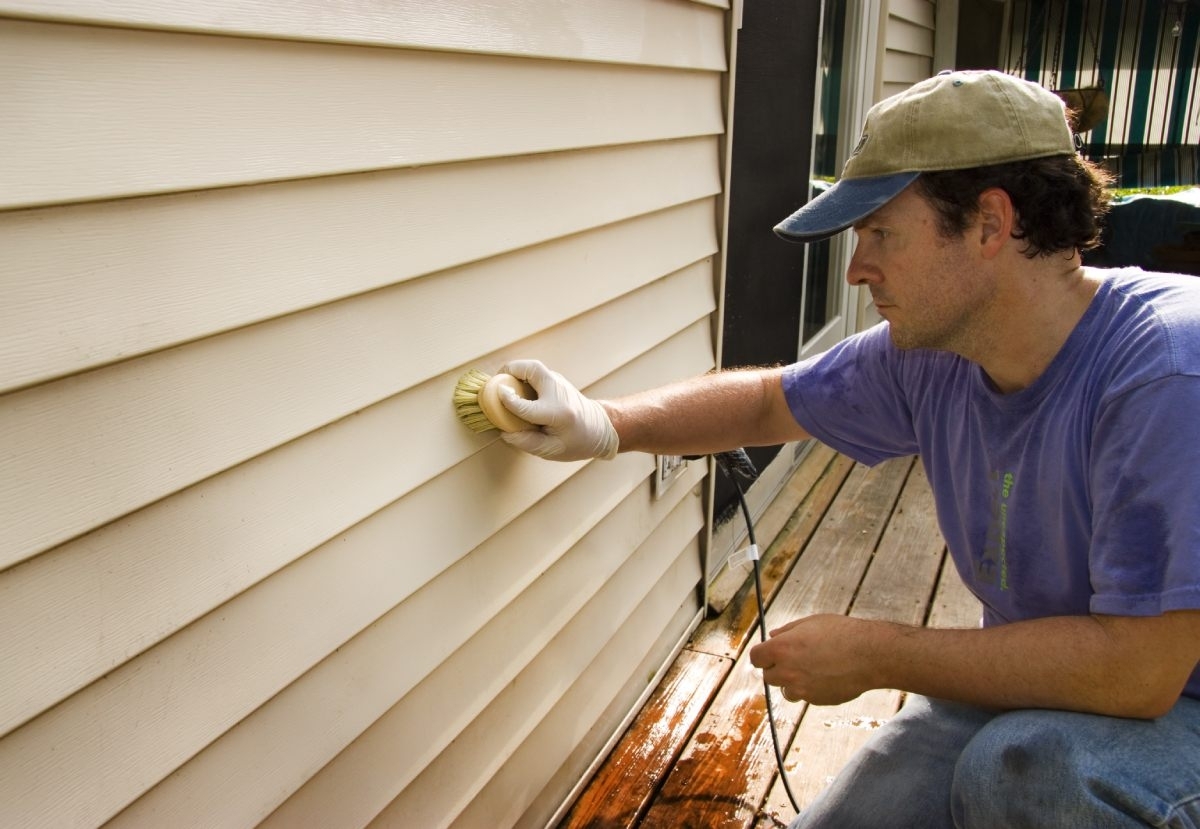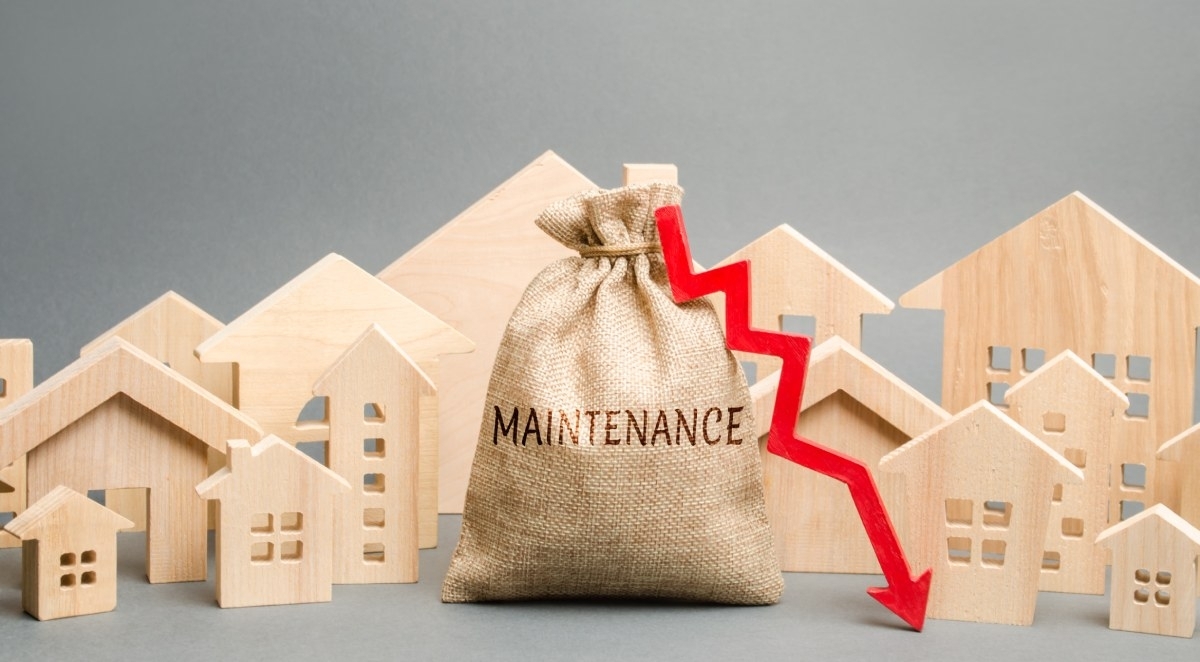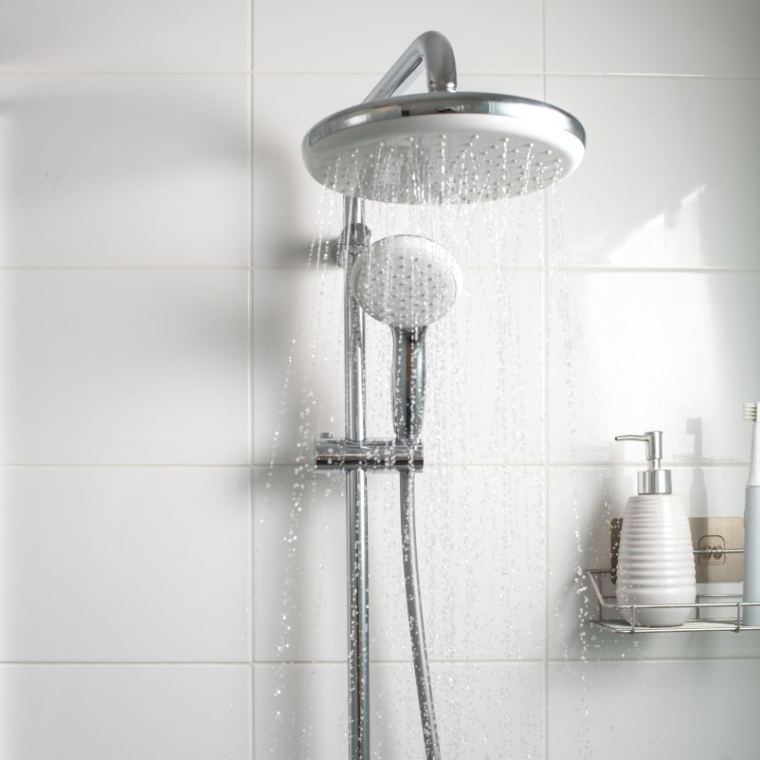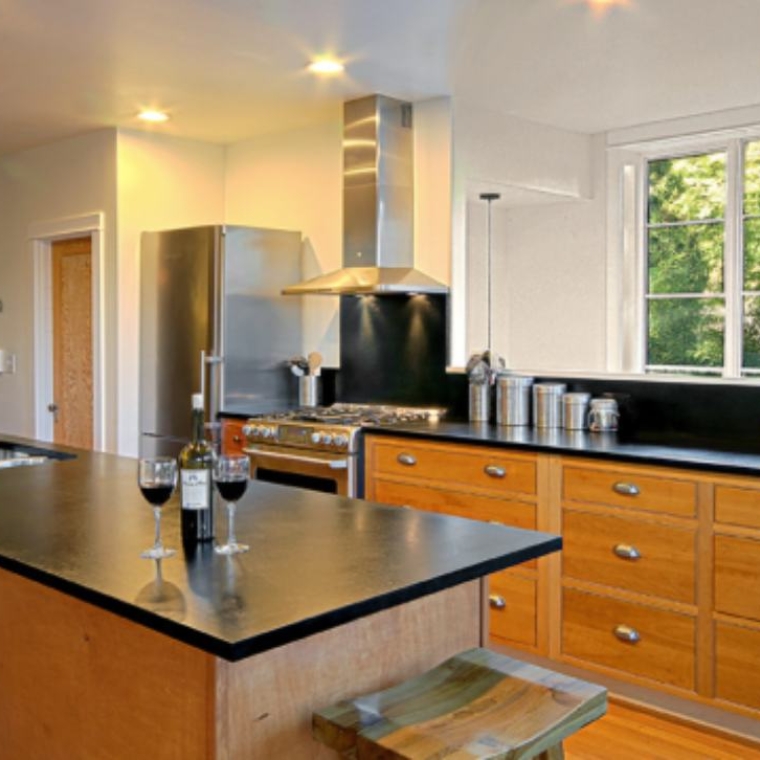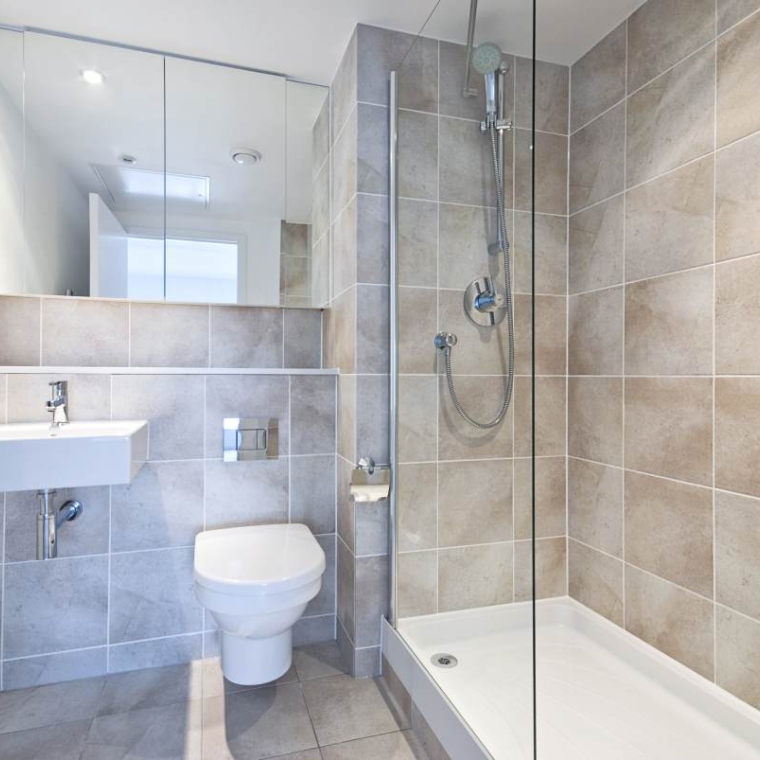siding
Simplify Your Life: Low-Maintenance Siding Options
You are probably spending more time and money than needed on your exterior.
Did you know that the right siding materials can not only save you time and money but also increase your home's curb appeal and overall value?
As you consider your home's siding, you may be wondering about the most durable and low-maintenance materials available.
As homeowners ourselves, we understand the importance of finding low-maintenance siding material options that can help you save time, money, and effort in the long run.
According to a recent survey, over 70% of homeowners in the United States prioritize low-maintenance exterior materials when choosing materials for their homes.
And with good reason - replacing worn-out, high-maintenance materials with more durable and long-lasting options can save you thousands of dollars in the long run.
That's why we're excited to share with you some of the top low-maintenance siding material options for your home.
So sit back, relax, and let us guide you through the world of low-maintenance siding materials.
By the end of this article, you'll have a better understanding of the best options available to you and how they can benefit your home for years to come.
Don't forget to fill out the form at the beginning of this article to obtain a free quote from a local contractor near you and subscribe to our newsletter for more home improvement tips and insights.
Why MyGreenHome?
Our team of experienced contractors has years of experience helping homeowners like you find the perfect solutions to enhance their homes, without breaking the bank and following their personal taste.
Plus, with our free quote service, you can explore your options without any obligation to commit.
In this guide:
- Vinyl Siding
- Fiber Cement Siding
- Engineered Wood Siding
- Aluminum Siding
- Conclusion
For a full immersion into siding, read our comprehensive guide.
You should change your siding material to a low-maintenance one immediately because it can save you time, money, and effort in the long run.
Siding that requires frequent maintenance or repairs can be a source of stress and inconvenience for homeowners, especially seniors who may have limited mobility or resources.
By choosing a low-maintenance siding material such as vinyl, fiber cement, engineered wood, or aluminum, you can reduce the amount of time and money spent on maintenance and repairs.
These materials are highly durable and resistant to common problems that affect other siding materials, such as rot, termites, and moisture damage.
Moreover, low-maintenance siding materials can enhance the energy efficiency of a home, reducing energy bills and creating a more comfortable living environment.
They can also add value to your home, making it more attractive to potential buyers if you decide to sell in the future.
Vinyl siding is a popular low-maintenance option for homeowners who want to enhance their home's curb appeal without breaking the bank.
Here's what you need to know about this durable and versatile material:
Durability and Low Cost
One of the primary reasons why homeowners opt for vinyl siding is its durability and low cost.
Vinyl siding is made from PVC plastic, which is resistant to moisture, rot, and insects.
It is an excellent choice for homes in areas with extreme weather conditions because it can withstand harsh winds, heavy rain, and snow without cracking or breaking.
Moreover, it is one of the most affordable siding options on the market, making it a popular choice if you are on a budget
Comparison to Other Materials
- Compared to wood siding, vinyl is more durable and requires less maintenance.
- Compared to brick siding, vinyl is less expensive and easier to install.
- It is also less vulnerable to moisture damage, insect infestation, rotting, cracking, and chipping.
Design Versatility
Vinyl siding comes in a wide range of colors, textures, and finishes, making it easy to match any home style.
It can be customized with accessories such as trim and shutters to add depth and visual interest to the exterior.
Moreover, vinyl siding is versatile enough to mimic the look of wood, stone, and other materials.
Environmental Impact
While vinyl siding is not biodegradable and can contribute to landfill waste, it is a highly energy-efficient material that can help seniors save on heating and cooling costs.
Vinyl siding with insulation can help reduce the transfer of heat and cold, which can ultimately lower your energy bills.
Pros and Cons
Pros:
- Durable and long-lasting
- Low cost compared to other siding options
- Resistant to moisture, rot, and insects
- Wide range of colors, textures, and finishes available
- Easy to clean and maintain
- Can enhance your home's energy efficiency
- Versatile enough to mimic the look of other materials
Cons:
- Can warp in extreme temperatures
- Not biodegradable and can contribute to landfill waste
- May not be as visually appealing as other materials to some homeowners
- Can crack or fade over time if not properly maintained
- Not as eco-friendly as some other siding options.
As you consider your options for low-maintenance siding, vinyl is a great choice for senior homeowners who want a cost-effective and low-maintenance solution. If you want to know more about it, give a look at this webpage.
Fiber cement siding is a popular option for homeowners who want a low-maintenance material that is both durable and fire-resistant.
Here's what you need to know about this versatile material.
Description and Durability
Fiber cement siding is made from a combination of cement, sand, and cellulose fibers.
It is a highly durable and long-lasting material that can withstand harsh weather conditions, including high winds and heavy rain.
In fact, fiber cement siding is known for its resistance to rot, termites, and other common problems that can affect wood siding.
Additionally, fiber cement siding has a Class A fire rating, making it an excellent choice for homeowners who live in areas with a high risk of wildfires.
Comparison to Other Materials
Compared to other siding materials, fiber cement has several advantages:
- It is less expensive than natural stone or brick siding, but more expensive than vinyl siding.
- It is more durable than vinyl and requires less maintenance than wood siding.
- Fiber cement siding can be customized to mimic the look of other materials, such as wood or stucco, making it a versatile choice for any home style.
Cost and Value
The cost of fiber cement siding can vary depending on several factors, such as the size of your home and the style of siding you choose.
However, in the long run, fiber cement siding is a cost-effective choice because it requires minimal maintenance and has a long lifespan.
According to Remodeling Magazine's Cost vs. Value report, fiber cement siding has an average return on investment of 77.6%, making it a smart choice for homeowners who are looking to improve their home's value.
Design Options
Fiber cement siding comes in a variety of colors, textures, and finishes, making it easy to find a style that matches your home's aesthetic.
Additionally, fiber cement siding can be customized with accessories such as trim, soffits, and fascia to create a cohesive look.
Fiber cement siding can also be painted any color you desire, allowing you to change the look of your home whenever you want.
Pros and Cons
As with any siding material, fiber cement has its pros and cons.
Pros:
- Highly durable and long-lasting
- Resistant to moisture, rot, termites, and fire
- Versatile and customizable to mimic the look of other materials
- Low maintenance requirements
- Can improve your home's energy efficiency
Cons:
- More expensive than vinyl siding
- Can be heavy and difficult to install
- Requires specialized tools and expertise to install correctly
- Can be brittle and crack in extreme temperatures
- Can be susceptible to moisture damage if not installed properly
In conclusion, fiber cement siding is an excellent choice for homeowners who want a low-maintenance, fire-resistant material that is both durable and customizable.
It is a cost-effective option that can enhance your home's value and energy efficiency.
Engineered wood siding is an eco-friendly and low-maintenance option for homeowners who want the look of natural wood without the upkeep.
Here's what you need to know about this durable and versatile material.
Description and Durability
Engineered wood siding is made from wood fibers, wax, and resins that are compressed together to create a material that looks and feels like natural wood.
It is highly durable and can withstand harsh weather conditions, including high winds and heavy rain.
Additionally, engineered wood siding is resistant to rot, termites, and other common problems that can affect natural wood siding.
Comparison to Other Materials
Compared to other siding materials, engineered wood siding has several advantages:
- It is less expensive than natural wood siding, but more expensive than vinyl siding.
- It has a much longer lifespan than natural wood siding and requires significantly less maintenance.
- It can be customized to mimic the look of other materials, such as brick or stone.
Cost and Value
The cost of engineered wood siding can vary depending on several factors, such as the size of your home and the style of siding you choose.
However, in the long run, engineered wood siding is a cost-effective choice because it requires minimal maintenance and has a long lifespan.
Additionally, engineered wood siding can increase your home's energy efficiency and value, making it a smart investment for seniors who want to enhance their home's beauty and functionality.
Design Options
Engineered wood siding comes in a variety of colors, textures, and finishes, making it easy to find a style that matches your home's aesthetic.
Additionally, engineered wood siding can be customized with accessories such as trim and shutters to create a cohesive look.
Engineered wood siding can also be painted or stained any color you desire, allowing you to change the look of your home whenever you want.
Pros and Cons
Pros:
- Highly durable and long-lasting
- Resistant to rot, termites, and other common problems that affect natural wood siding
- Versatile and customizable to mimic the look of other materials
- Low maintenance requirements
- Can improve your home's energy efficiency
Cons:
- More expensive than vinyl siding
- Can be susceptible to moisture damage if not installed properly
- Requires specialized tools and expertise to install correctly
- Can fade or discolor over time if not properly maintained
Engineered wood siding is an excellent choice for those who want a low-maintenance, eco-friendly material that is both durable and customizable.
It is a cost-effective option that can enhance your home's value and energy efficiency.
If you are a friend of the environment and want to know about more sustainable home improvement projects, give a read to this article.
Aluminum siding is a low-maintenance and durable option for seniors who want a modern and sleek look for their home's exterior.
Here's what you need to know about this versatile material.
Description and Durability
Aluminum siding is made from aluminum coils that are coated with a baked-on enamel finish.
It is highly durable and can withstand harsh weather conditions, including high winds and heavy rain.
Moreover, it is resistant to rust and corrosion, making it an excellent choice for homeowners who live near the ocean or in areas with high humidity.
Comparison to Other Materials
Compared to other siding materials, aluminum has several advantages.
It is less expensive than natural stone or brick siding, but more expensive than vinyl siding.
However, it is more durable than vinyl and requires less maintenance than wood siding.
Additionally, aluminum siding can be customized with a variety of colors and finishes, making it a versatile choice for any home style.
Cost and Value
The cost of aluminum siding can vary depending on several factors, such as the size of your home and the style of siding you choose.
However, in the long run, aluminum siding is a cost-effective choice because it requires minimal maintenance and has a long lifespan.
Moreover, aluminum siding can increase your home's energy efficiency, making it a smart investment for seniors who want to enhance their home's functionality.
Design Options
Aluminum siding comes in a variety of colors and finishes, making it easy to find a style that matches your home's aesthetic.
Additionally, aluminum siding can be customized with accessories such as trim and shutters to create a cohesive look.
Moreover, aluminum siding is versatile enough to mimic the look of other materials, such as wood or stone.
Pros and Cons
As with any siding material, aluminum has its pros and cons.
Pros:
- Highly durable and long-lasting
- Resistant to rust, corrosion, and other common problems that affect metal siding
- Versatile and customizable to mimic the look of other materials
- Low maintenance requirements
- Can improve your home's energy efficiency
Cons:
- More expensive than vinyl siding
- Can dent or scratch if struck by heavy objects
- Can fade or discolor over time if not properly maintained
- Can be noisy in windy conditions
Aluminum siding is an excellent choice for senior homeowners who want a low-maintenance, modern material that is both durable and customizable.
In conclusion, choosing the right siding material for your home is an important decision that can impact both the look and functionality of your home.
Each of the siding options we discussed - vinyl, fiber cement, engineered wood, and aluminum - has its own advantages and disadvantages, but all are excellent choices for senior homeowners who want a low-maintenance, durable material that enhances their home's beauty and value.
At MyGreenHome, we offer a wide range of siding options to suit any style and budget.
Our team of experts can help you choose the right siding material for your home and install it with precision and care.
Whether you're looking for a cost-effective vinyl siding option, a durable fiber cement material, a versatile engineered wood siding, or a sleek aluminum finish, we have you covered.
Don't wait any longer to upgrade your home's exterior.
Fill out the form above this article today for a free quote and to learn more about how we can help you enhance your home's beauty and value.
And don't forget to subscribe to our newsletter to stay up-to-date on the latest home improvement trends and tips, and to receive amazing discounts on your next projects.
Take the first step towards a more beautiful and functional home today!
Last update: 22 Dec 2025



